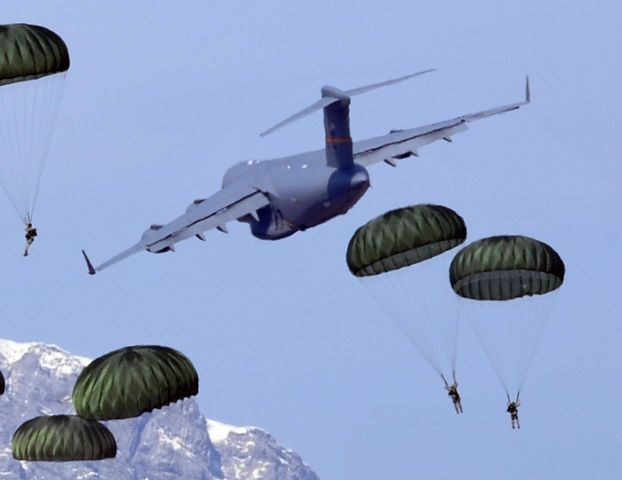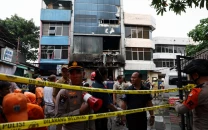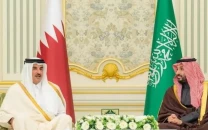US Air Force looks to train pilots for hi-tech threats
Senior commanders are anxious for crews to train for operations other than close air support.

But in the desert outside Las Vegas, the US Air Force is trying to get back to basics, reminding pilots how to fly against a sophisticated enemy with fighter jets, surface-to-air missiles and satellite jammers.
Traditional combat skills have gotten "a little rusty," said Steve Imonti, a former fighter pilot who helps oversee simulated air battles out of Nellis Air Force Base.
If a pilot goes three years or more without attending the "red flag" mock battles at Nellis, "then you see that rust really start to build up," said Imonti, director of programs and evaluation for the 414th Combat Training Squadron.
American pilots have become adept at precision air strikes in Iraq and Afghanistan, with a handful of planes circling over a single target after receiving a call for air power from troops on the ground.
With the United States withdrawing most of its combat troops from Afghanistan by the end of 2014, senior commanders are anxious for crews to train for operations other than close air support, officials said.
Military leaders want pilots from all the services to spend more time training for large-scale assaults in a "contested environment," where US air superiority is not a given and where batteries of anti-aircraft missiles pose a lethal threat.
"When we pull out of Afghanistan, we will have an increase here" at Nellis, said Colonel Chip Thompson, chief of the vast range just north of Las Vegas where the red flag exercises take place.
"The goal is, I want every lieutenant within his first two years to go to a red flag," he said, instead of the current average of about three years. "So that when you go to war, you've seen it before."
At red flag, pilots on a "blue team" face off against a hostile "red" fleet of fighters that employ tactics drawn from intelligence reports on Iran, China and other potential adversaries.
Instead of insurgents equipped with AK-47s and roadside bombs, the red team is well-armed, with an array of simulated surface-to-air missiles and the ability to jam radar, disrupt radio communications and disable computer networks at a command center.
Although officers insist the red side represents a generic enemy, the scenarios and targets often closely resemble real world armies, particularly Iran.
The red flag exercises started in 1975 after American pilots suffered heavy losses in Vietnam, where the "kill ratio" was 2:1, much worse than in previous conflicts.
Senior officers decided pilots needed more realistic training that would convey the intensity of aerial combat, as statistics showed if airmen could survive their first 10 sorties, their chances of survival dramatically improved.
"When you're flying around and you look over and see a smoke trail coming at you, it's OK to have your pucker factor as long as it occurs at red flag," said Lieutenant Colonel Brian Morrison, deputy commander of the 57th Adversary Tactics Group.
"So that when it actually happens in combat, you're saying, 'I've been there and done this,'" he said.
After the end of the Cold War, the red flag exercises were scaled back, and drills held at bases overseas were scrapped.
But the exercise got a new lease on life starting in 2005, with the Air Force adding mock surface-to-air missiles (SAM) and space and cyber warfare units.
At this month's red flag, young US pilots, along with crews from the United Arab Emirates and Colombia, woke every day to a briefing on a daunting new mission involving dozens of aircraft, including F-15 and F-16 fighters, B-1 and B-52 bombers, A-10 ground attack planes, aerial refueling tankers, unmanned drones and early warning radar aircraft.
In day and night time battles, they faced off against US pilots flying F-15 and F-16 fighter jets painted in camouflage resembling the patterns on Russian warplanes.
The red team pilots are part of dedicated "aggressor" squadrons that work full-time at emulating tactics of potential enemies, based on the latest intelligence analysis from spy agencies.
Commanders are also increasingly adding simulated underground targets to red flag scenarios, officials said, training pilots on techniques that might be required if the United States moves to take out buried nuclear sites in North Korea or Iran.
"Underground targets are becoming more of a factor, especially with Iran, North Korea scenarios," Thompson said. "These are very hard to find, hard to destroy."



















COMMENTS
Comments are moderated and generally will be posted if they are on-topic and not abusive.
For more information, please see our Comments FAQ